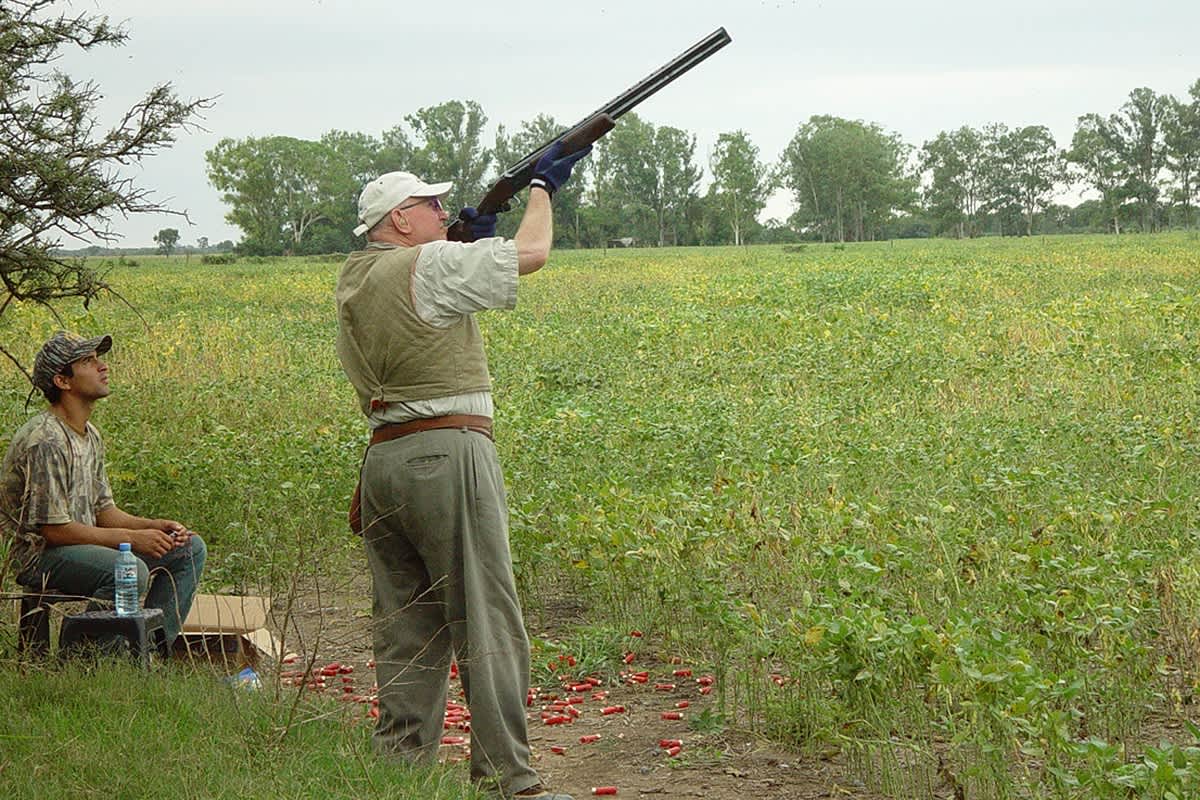Experience the Ultimate in Volume Wingshooting This Spring
Bill Miller 03.09.15

“He may be able to bust clay targets, but that ain’t hunting. I can shoot birds in the field, where it counts.”
That’s a classic excuse heard from the guy who just finished down the ranks at a Sunday afternoon trap shoot or friendly, after-work sporting clays league. However, were he to encounter the same competitor in the field, chances are he’d get his clock cleaned there, too.
 In reality, a great clays shooter is almost always a great field shot, too. There may be a few great field shots left who don’t do well on the trap or skeet range, but there are fewer of them all the time. They are relics of the day when there was enough hunting opportunity with large enough limits that a guy could learn and perfect shooting skills on real live birds in the field. If you restricting your hunting to North America these days, that would pretty much be impossible unless you fanatically pursued snow geese, feral pigeons, and crows—and threw in a bunch of game farm “driven” shoots for good measure.
In reality, a great clays shooter is almost always a great field shot, too. There may be a few great field shots left who don’t do well on the trap or skeet range, but there are fewer of them all the time. They are relics of the day when there was enough hunting opportunity with large enough limits that a guy could learn and perfect shooting skills on real live birds in the field. If you restricting your hunting to North America these days, that would pretty much be impossible unless you fanatically pursued snow geese, feral pigeons, and crows—and threw in a bunch of game farm “driven” shoots for good measure.
Today, there’s no better place to gain true, in-the-field wingshooting experience than South America. Since the seasons south of the equator are the opposite of ours, spring is a great time to do it. March, April, and May in Argentina are the equivalent of September, October, and November here in the States.
In Argentina and other South American hunting hotspots, the opportunity to gain shooting experience are limited only by what you’re willing to spend on shells. Doves there are agricultural pests. Unlike in North America, these birds do not migrate. They inhabit traditional roosts where populations are best measured by number of birds per square meter! They produce three or more broods per year, and the young doves begin propagating in just a few months after hatching. It’s estimated that left unchecked the doves would eat one-third of the small grain agricultural crop production in the region.
If the doves weren’t an economic boon by bringing in free-spending, non-resident hunters from the United States and Europe, the farmers would likely burn and bulldoze these roosts. Then the birds would be wiped out—permanently. The hunting helps the birds and the economies of these countries. Dove and pigeon hunting outfitters employ guides, bird boys, cooks, housekeepers, drivers, mechanics, land managers, and more.
 Despite the much-needed economic injection provided by travelling hunters, South American hunts are a bargain these days with the US dollar strong again. You can enjoy three full days of shooting including luxury accommodations, fantastic meals, and renowned Argentine wines and hospitality for less than $2,000 plus shells (some packages include a case or more of shells at that price, too).
Despite the much-needed economic injection provided by travelling hunters, South American hunts are a bargain these days with the US dollar strong again. You can enjoy three full days of shooting including luxury accommodations, fantastic meals, and renowned Argentine wines and hospitality for less than $2,000 plus shells (some packages include a case or more of shells at that price, too).
If you want to truly use a South American hunt as an opportunity to sharpen your wingshooting skills, there’s no better way to do it than by taking a sharp-eyed coach into the field with you. Many top instructors organize and host South American high-volume hunts. Among them are Chris Batha, Leon Measures, Marty Fischer, Gil and Vicki Ash, and more.
A thousand shots a day per gun—fired at real, feathered game—is a conservative approach. Where else are you going get that kind of wingshooting experience today?
These insights brought to you by Federal Premium Ammunition, Camp Chef, and the Quebec Outfitters Federation.


